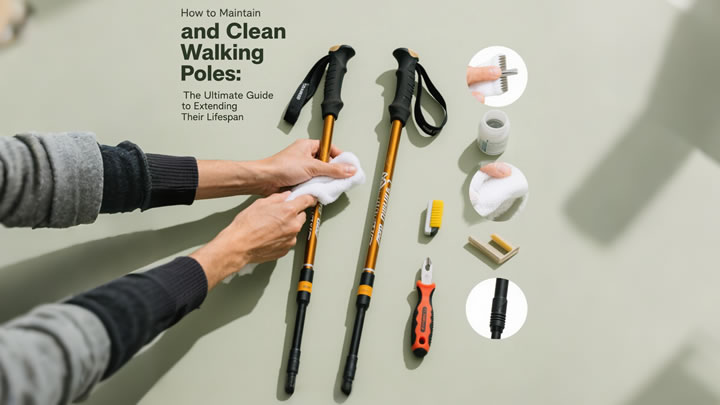Best Walking Poles for Long-Distance Trails: Your Ultimate Guide to Endurance Hiking
When embarking on long-distance trails like the Appalachian Trail, Pacific Crest Trail, or any multi-day trek, your walking poles transform from simple accessories into essential survival tools. The right pair can mean the difference between finishing strong and suffering from preventable fatigue or injury. For thru-hikers and endurance enthusiasts, the best walking poles are engineered not just for occasional support, but for thousands of hours of reliable performance under demanding conditions.

Why Pole Choice Matters on Long-Distance Hikes
The cumulative effect of millions of pole plants over hundreds of miles makes gear selection critical. Superior poles provide:
- Endurance Enhancement: By engaging your upper body, poles distribute workload more evenly, conserving leg energy over long distances.
- Injury Prevention: Consistent impact reduction protects knees and joints from the repetitive stress of daily mileage.
- Rhythm and Pace: Proper poles help establish a sustainable hiking rhythm that can be maintained for hours.
- Versatility: From stream crossings to steep descents, reliable poles provide security in unpredictable trail conditions.
Critical Features for Long-Distance Performance
1. Weight and Material: The Gram-Counting Game
Every ounce matters when you're covering thousands of steps daily. Carbon fiber poles typically weighing 12-18 ounces per pair offer the ideal balance of lightweight performance and sufficient durability. While aluminum alternatives (16-24 ounces) provide maximum durability for rough terrain, the weight savings of carbon become increasingly valuable with each passing mile.
2. Locking Mechanism Reliability
After thousands of adjustments, inferior locking systems inevitably fail. Flick-lock/Lever-lock mechanisms from reputable brands consistently outperform twist-lock systems in long-term reliability. Look for metal-reinforced locks that maintain consistent tension through temperature changes and moisture exposure.
3. Grip Comfort and Materials
Your connection to the poles must remain comfortable through sweat, rain, and endless repetition. Cork grips excel for long-distance use as they naturally conform to your hand shape and wick moisture effectively. Extended foam grips provide versatile hand positions during ascents, while ergonomic shaping reduces pressure points during extended use.
4. Shock Absorption Considerations
While adding minimal weight, built-in shock absorption can significantly reduce cumulative impact on joints and hands. However, many ultralight purists prefer non-shock models for their simplicity and direct trail feedback. Your choice should depend on your personal sensitivity to impact and overall weight priorities.
Top Performer Recommendations
Black Diamond Distance Carbon Z-Poles: The go-to choice for weight-conscious thru-hikers. Their folding Z-pole design offers incredible packability and rapid deployment, while carbon construction keeps weight minimal. The fixed-length design eliminates potential locking mechanism failures.
LEKI Micro Vario Carbon: For hikers wanting adjustability without weight penalty, these poles deliver. The innovative Speed Lock system provides secure adjustments, while the extended foam grip accommodates various hand positions. Their vibration reduction technology is particularly valuable for preserving hand comfort over long periods.
MSR DynaLock Ascent: The optimal choice for challenging, variable terrain where durability is paramount. While slightly heavier, their robust construction and incredibly secure locking mechanism inspire confidence when dealing with rock scrambles, heavy packs, and unpredictable trail conditions.
Pro Tips for Long-Distance Pole Use
- Carry Replacement Parts: Always have extra tips and potentially a repair sleeve for emergency field fixes.
- Practice Efficient Technique: Develop a sustainable rhythm that uses pole plants for propulsion rather than just support.
- Regular Maintenance: Clean locking mechanisms weekly and check for wear at connection points.
- Consider a Hybrid Approach: Some hikers start with durable aluminum poles and switch to carbon fiber as their base weight decreases.
The perfect long-distance walking poles become extensions of your arms—trusted companions that share your burdens, enhance your efficiency, and protect your body through every mile of your journey. By investing in poles specifically designed for endurance use, you're not just buying equipment; you're ensuring your comfort and safety through the most challenging and rewarding adventures of your life.






